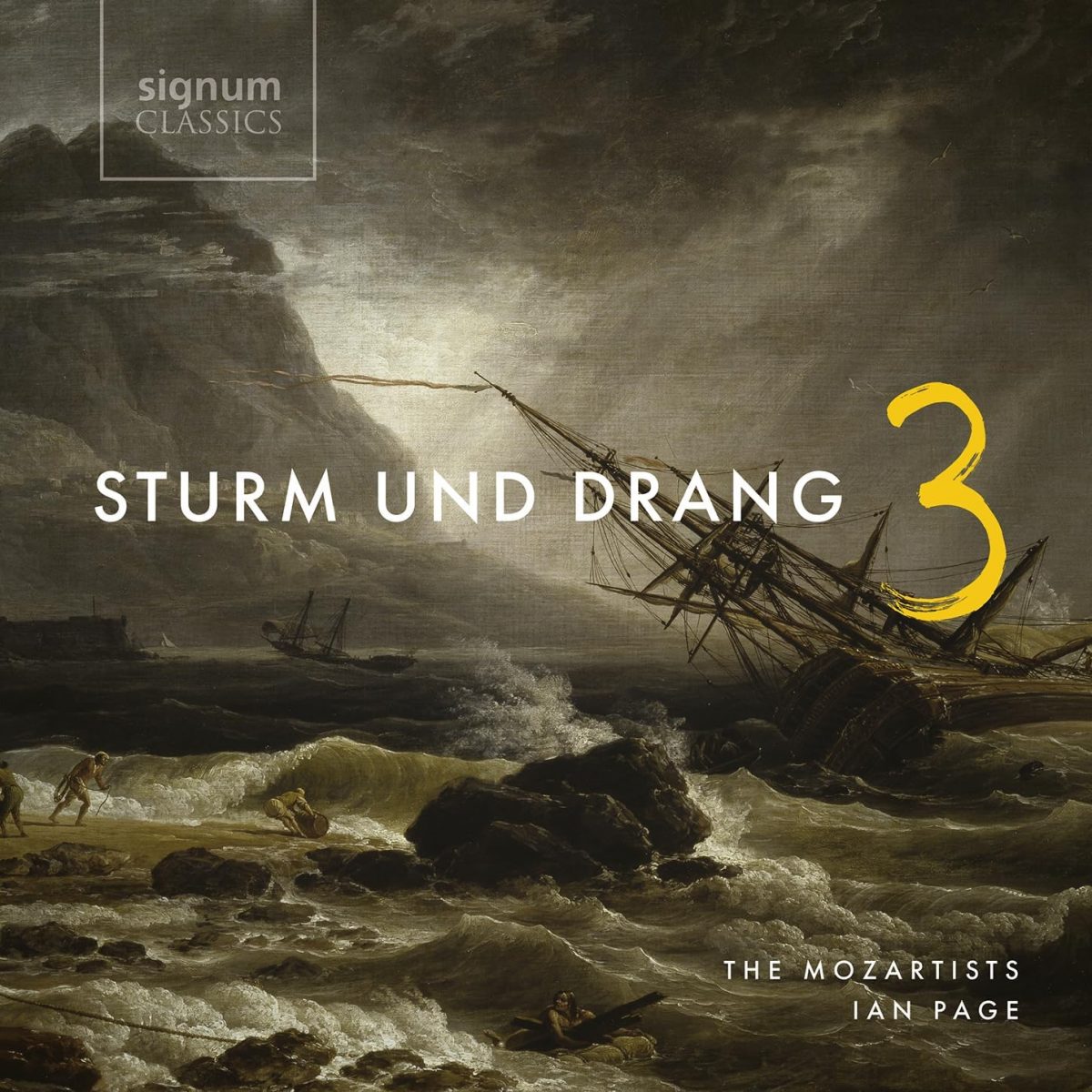The Mozartists, conducted by Ian Page
72:59
Signum SIGCD759
This is the eagerly anticipated third volume in what is planned as a seven-disc series of so-called ‘Sturm und Drang’ (storm and stress) works. Applied to music, as previously noted, it’s a slippery concept that takes its origination from the literary genre of that name, a movement typified by Goethe’s Sorrows of Young Werther (1774) and driven by the expression of fierce, sometimes uncontrollable passions. A forerunner of 19th-century Romanticism, it is applied notably to literary works from the early 1770s until c.1790.
The most common usage of the term in music is to a group of stormy, dramatic symphonies composed by Haydn from the mid-1760s to around a decade later, the present ongoing series having to date featured three of them: No. 39 in G minor (1765) on vol 2; No 49 in F minor ‘La Passione’ (1768) on vol 1, and No 44 in E minor ‘Trauer’ (c.1771), which is included on the present CD. It’s a work Ian Page describes as the greatest of the composer’s ‘Sturm und Drang’ symphonies, while I, throwing caution to the wind, would describe it as one of the greatest of all his symphonies. It will be noted that these works are in a minor key, one of the main characteristics of ‘Sturm und Drang’ compositions, and also that two of them pre-date the literary movement, making it difficult to tie them into any suggestion of a defined ‘Sturm und Drang’ movement. As Ian Page suggests in his general note on the topic included, another and more tenable explanation is that it is a reaction against the Rococo charm of the mid-century.
All four movements of the ‘Trauer’ symphony are outstanding, but it is arguably on the magnificent Adagio, placed as the third rather than second movement, that the symphony’s particular claim to exceptional quality lies. Employing muted strings throughout, it threads a path of utmost tranquillity disturbed only by momentary restlessness in the second half. It is supremely well played here with a sense of rapt beauty that further enhances it, as does the contrast with the fiercely uncompromising outer movements. By coincidence, the other symphony here also includes a remarkable slow movement with muted strings. This is the three-movement Symphony in G minor by the Bohemian composer Leopold Kozeluch (1747-1818), the last of a group of three published in 1787. Kozeluch was well-established in Vienna by the time Mozart arrived there in 1781 and in 1785 founded his own publishing house in the city. The outer movements of the G minor Symphony are splendid examples of ‘Sturm und Drang’, typical of the angst, tension, buzzing tremolandi and angularity familiar from the symphonies of Haydn and Mozart (and J C Bach in vol 2) in that key. The central Adagio, however, is a sublime movement, with some particularly felicitous writing; the whole movement sounds as if it is an anticipation of Così fan tutte. The final orchestral work on the disc is Mozart’s Adagio and Fugue for strings, K 546, two movements composed some while apart, with the new, deeply, almost spiritual Adagio composed in 1788 prefacing a fiercely inexorable fugue orchestrated from an earlier fugue for two pianos. The work as a whole is a Janus-like composition with the Adagio anticipating Romantic expressivity, the Fugue looking firmly back over its shoulder to the Baroque. It is projected with great depth and body by the strings of The Mozartists.
Another special feature of the series is the inclusion of vocal, mainly operatic, extracts. Vol 1 is especially valuable in this respect, including first recordings of arias by badly neglected composers such as Jommelli and Traetta, in addition to Gluck, all splendidly sung by Chiara Skerath.
I don’t feel the vocal contribution here to be as strong, either as to content or performance. The US soprano Emily Pogorelc is typical of the current vogue for singers that essay a wide range of repertoire rather than specialise in earlier music. She has a significant continuous vibrato – listen for example to the lovely cavatina that bridges the two stretches of accompanied recitative in Paisiello’s scena for Adrane from Annibale in Torino (Turin, 1771) – and there is a distinct lack of control in the upper range, especially in coloratura. The voice itself has a lustrous quality that brings its rewards, but I feel these are more likely to be appreciated in a later repertoire. The other, and to my mind, superior, vocal excerpt comes from Anton Schweitzer’s Alceste (Weimar, 1773). The opera is notable for having a German libretto by no less celebrated a writer than Wieland, though the music is thoroughly Italianate. Alceste’s ‘Er ist gekommen … Zwischen Angst’ opens the opera in full dramatic flood, as the queen awaits news of her husband Admetus’s impending death. Pogorelc captures the drama well, but again too much of her singing is blustery and lacking control.
Overall, however, this makes for another exceptionally satisfying addition to a series that is special not just for the thought and scholarship that goes into it, but Page’s direction of his fine players. It is throughout beautifully balanced and paced, while at the same time musically highly insightful.
Brian Robins
